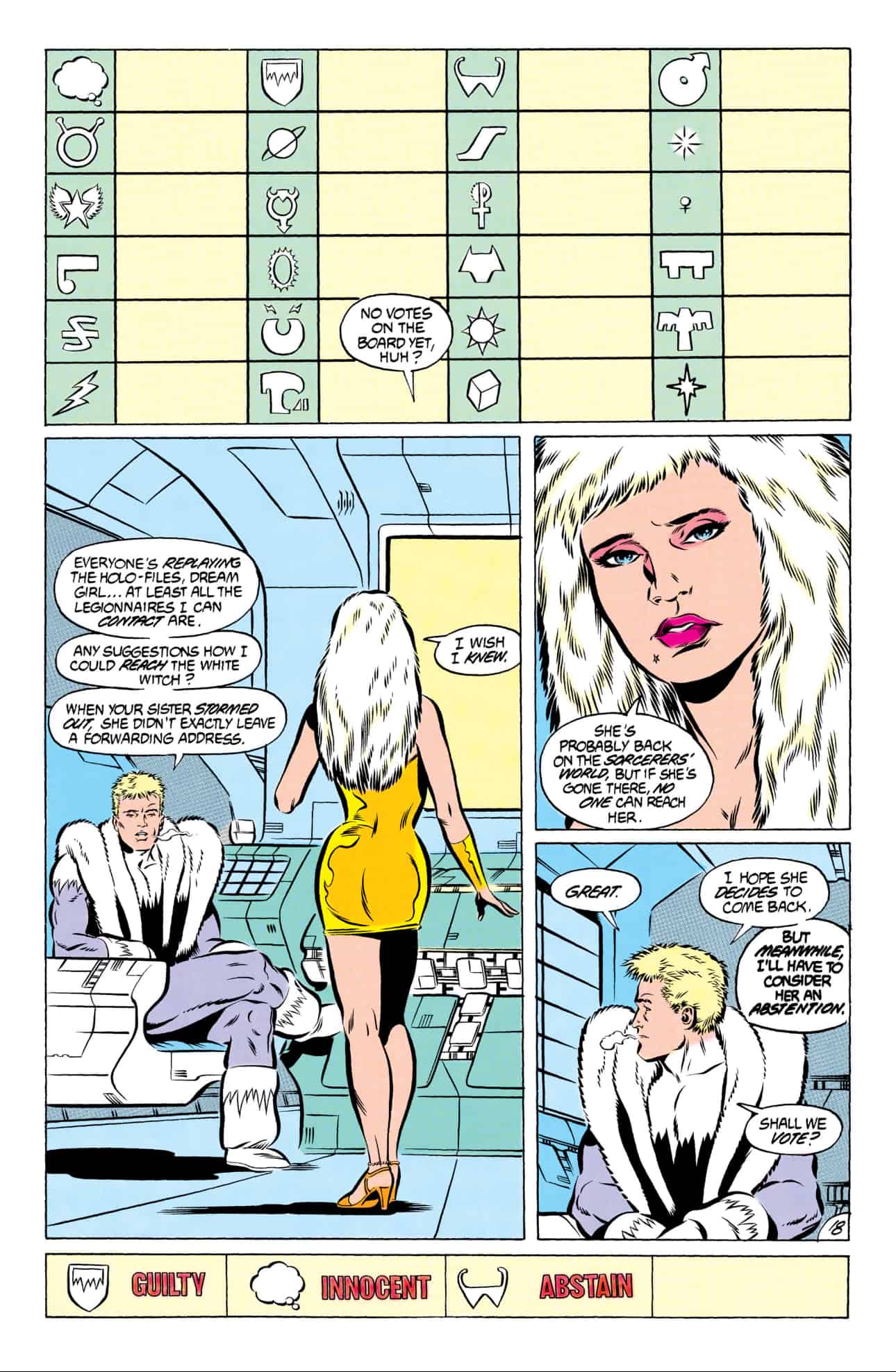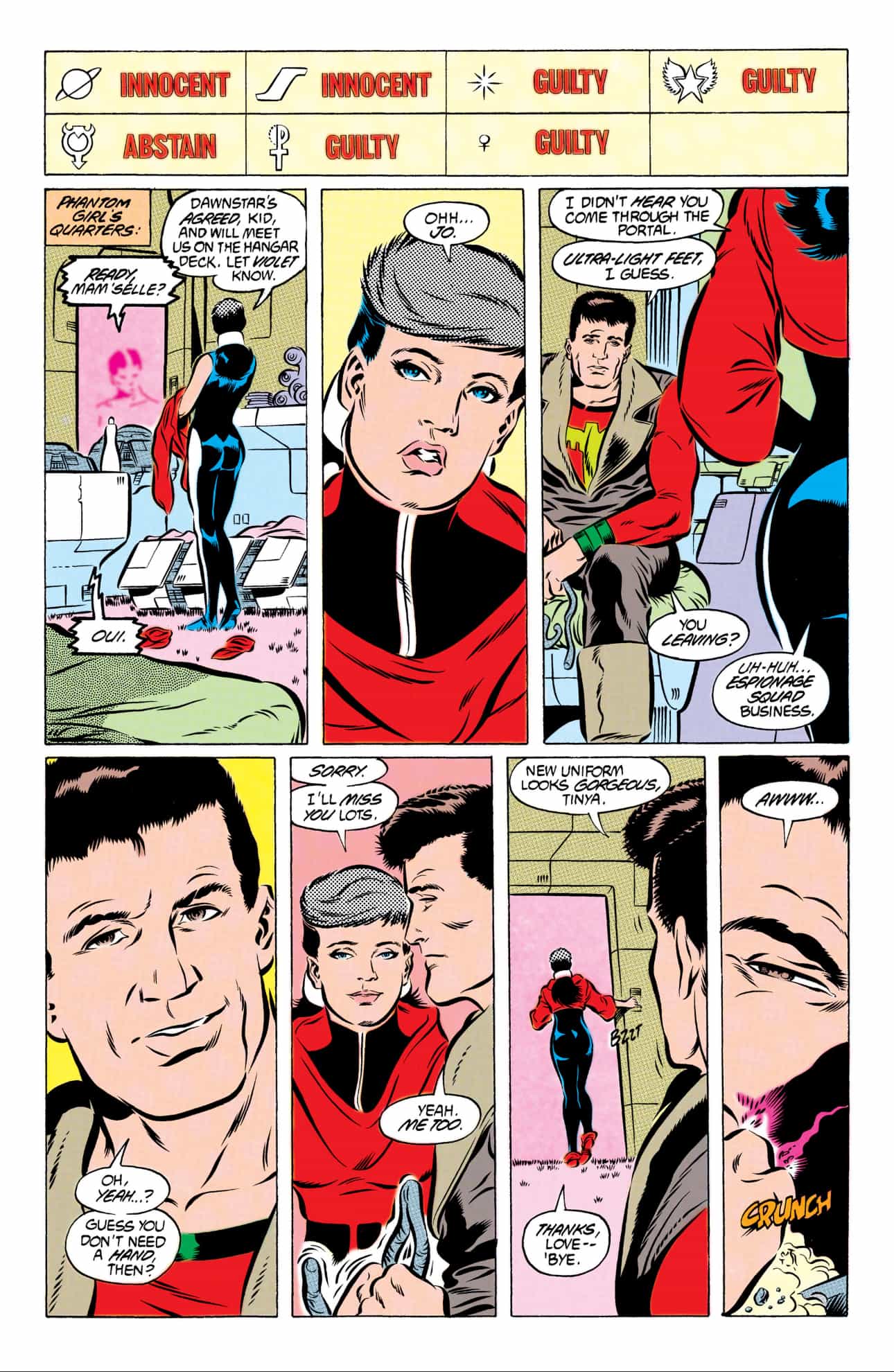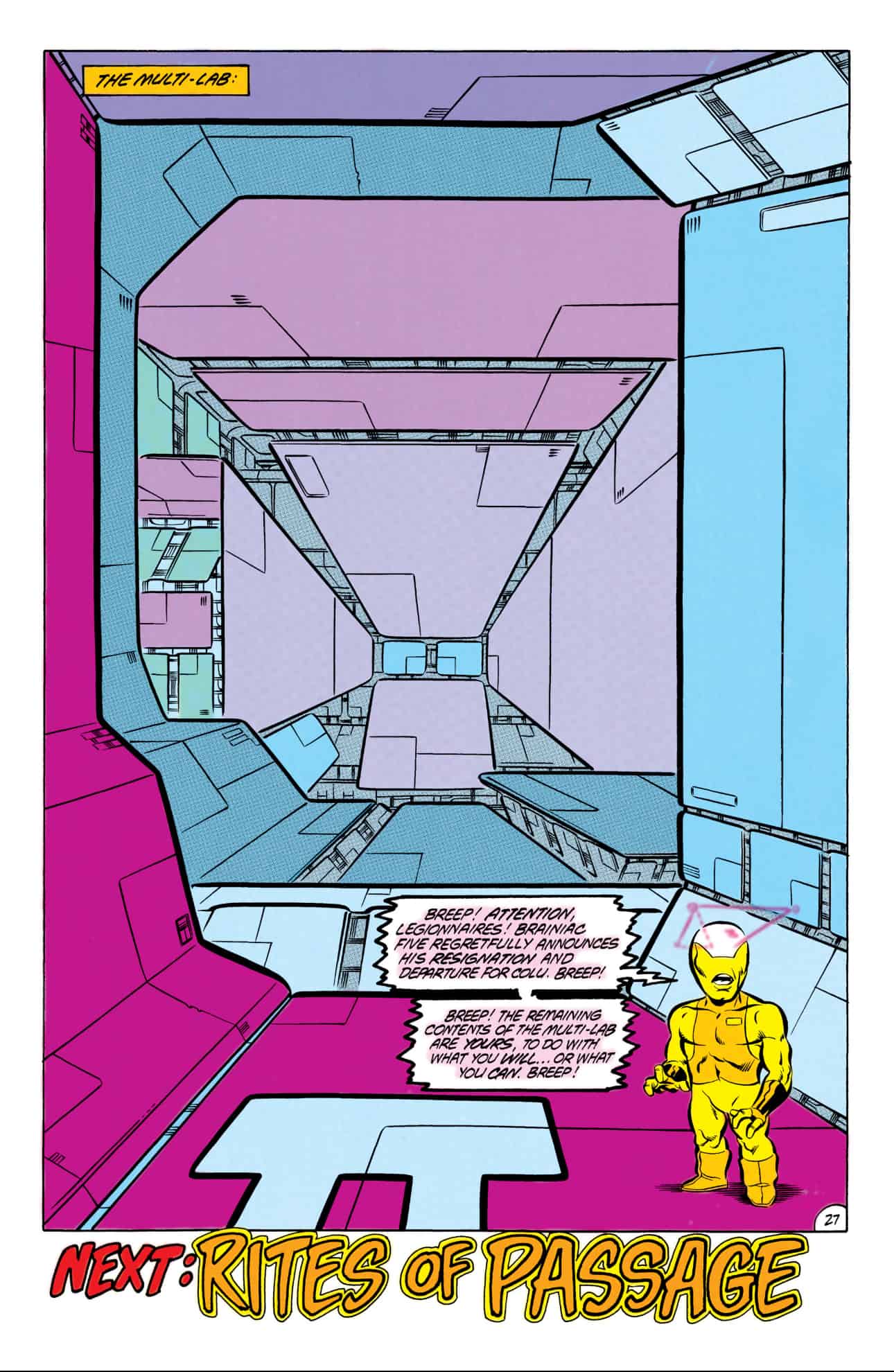After the cataclysmic events that transpired in Legion of Superheroes #50, where a handful of Legionnaires traveled to the very end of time to battle one of their most dangerous enemies, the Time Trapper! The Time Trapper is the embodiment of entropy, who’s constantly being depicted as one of the Legion’s most deadliest of threats, up there with Mordru, but seems to have total mastery of time itself. Which is quite the big deal for a team set 1000 years from now, and has jaunts into the past in a semi-regularly basis.
The Time Trapper was created all the way back in 1964 (he’s about to celebrate his 60th anniversary!) by Legion legends Edmond Hamilton and John Forte, he’s had a long, storied history with the Legion. Originally depicted as a Soviet era dictator, created technology that prevented the Legion to explore their future by having an “Iron Curtain” surrounding their time technology, but it’s from their that his character development would begin. He’d be central to several stories over the years, it’s with him that the Legionnaires would be introduced to one of their biggest threats post-Crisis, the Time Sorceress Glorith! The Trapper would be found causing havoc for our young heroes from the future, but one of his biggest storylines would take place after the Crisis! Yes, the Time Trapper was the villain responsible for the pocket dimension that Pre-Crisis Superboy was in, and that’s why the Legion still had memories of him, despite the Crisis, and their adventures were still very real.

It was this last ditch effort by a handful of Legionnaires, including Brainy, Mon-El, Saturn Girl, and Duplicate Damsel, with their ally Rond Vidar, would go to the end of time, and take on the Trapper for one last time. Things wouldn’t go as well as they liked it to be, with Mon-El being injured to near the point of death, and Duo Damsel, would lose another one of her selves, having an incredibly devastating impact on her life. It’s this death, and attack on Mon that would force Vidar to reveal to the Legionnaires, and the Trapper, as a Green Lantern. With Rond’s attack surprising everyone involved, Brainy would unleash the Infinite Man on the Trapper. The Infinite Man was Jaxon Rugarth, a time scientist for the Time Institute, who after an experiment goes astray, was transformed into the Infinite Man. The transformation would destroy every fiber of his consciousness, leaving only this being with incalculable power.

It was him who Brainy would unleash on the Trapper at the end of time, effectively killing both the Trapper and the Infinite Man, and it’s this action that puts him on trial. As with all of the superhero teams of that time, there were always rules, with one of the biggest rules being to not kill, but as time marched on, so did the comic fans. Things were becoming more violent, and the once black and white rules that came during the Silver Age were no longer applicable, and that’s what Paul Levitz and Keith Giffen was about to show the Legion fans that we too were ready to change. Levitz is quite possibly the greatest writer who has ever been associated with the property. Much like Chris Claremont with the X-Men, or Marv Wolfman with the Titans, he’d mastermind some of the biggest stories of the Legion’s history. It was Levitz who would give us the pivotal EarthWar, the Legion of Supervillains war, and the Universo Project, but it’d be the Great Darkness Saga with artist/co-writer Keith Giffen that’d put the book on the map.
Years later, as Levitz was slowly transitioning to the role of publisher, Giffen was coming on to take over. Now, this was around the time that Keith Giffen was slowly becoming the most prolific writer from this era with DC. He and co-writer J.M. DeMatteis would relaunch the Justice League, Doctor Fate, and many more, but he wasn’t quite ready to handle being the sole creative hand, so he convinced Levitz stay on for an extra year, while Giffen would continue to hone his craft with the Legion. It’s during this time period that we’d get to see the end of Sarya, the Emerald Empress, and the Magic Wars, where science would be slowly losing control, as magic continues to spread its influence throughout the universe.

Quite the ominous image
As the creators continued to mature the material, so did the characters. One of the things we see is what will those in the Legion would be willing to do to save the universe from the menaces that they face. It was Polar Boy, the Legion leader at the time, who was fighting to preserve what it was to be a Legionnaire. But the world was no longer the same, and it was being tested with us that day. It was a dark day, and the losses were incredible. Who had to pay for these events? Is this what the Legion had to become to survive? Levitz and Giffen held up a mirror to both the characters tasked with the judging Brainy, but also to ourselves. What constitutes being alive? Was the sacrifice of not only the Infinite Man, but also that of Mon-El’s sacrifice, and the loss of Luornu’s other half?





